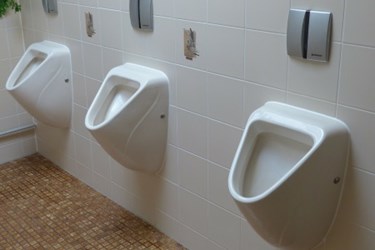Will Future Urinals Provide Dehydration Testing?
By Chuck Seegert, Ph.D.

Testing for dehydration may become easier and more efficient with an innovative new device under development by researchers at Flinders University. By adding compact medical devices to urinals, hydration levels can be analyzed in real-time, providing immediate feedback.
In certain environments, dehydration can be a serious issue. Work environments like mines, where working temperatures can be extremely high, pose serious dangers to workers if they are not vigilant about their hydration levels.
To help combat this issue, collaborators from Finders University’s Medical Device Partnering Program (MDPP) have helped to develop a device called the Hydralert, according to a recent press release from Flinders News. The concept, originally created by an occupational hygienist named Ryan Wynch, could replace less effective methods to provide hydration data in real-time.
“Heat stress can be a serious safety issue because it impairs concentration, decreases productivity and causes illness,” said Dr. Susan Close, the Australian Manufacturing and Innovation Minister, in the press release. “If successful, Hydralert will provide an innovative alternative to current time-consuming approaches, allowing employees to self-test day or night, without the need for a health professional.”
The Hydralert concept is one of two projects receiving aid from the South Australian Government’s Medical Technologies Program, which will provide design assistance to the team, according to the press release. Clinical trials are planned in collaboration with Occulert Pty Ltd.
Measurement of dehydration may find a place in other application areas as well. One example is in sports, where athletes train intensely and, without proper attention, can become dehydrated. This could be of particular concern to coaches and parents of student athletes.
Soldiers in dry, hot, desert-like conditions may also benefit from such a technology. One solution offered by the Army is called the Soldier Water Estimation Tool (SWET), which is a smartphone app, according to a recent story from Army.mil. The app estimates water requirements based on user inputs like uniform ensemble, level of activity, weather conditions, and more. It is, however, only an estimate. While it is a step in the right direction, the Hydralert would likely be more accurate because it is a direct measurement diagnostic.
Fluid loss by sweating can lead to dehydration, but it also has potential for diagnostic use. In some cases sweat can reveal the presence of disease by an imbalance of electrolytes, which can be tested without taking a blood sample. In fact, certain wearable technologies have been developed that study sweat as a way of diagnosing fatigue and even cystic fibrosis, according to a recent article on Med Device Online.
